-
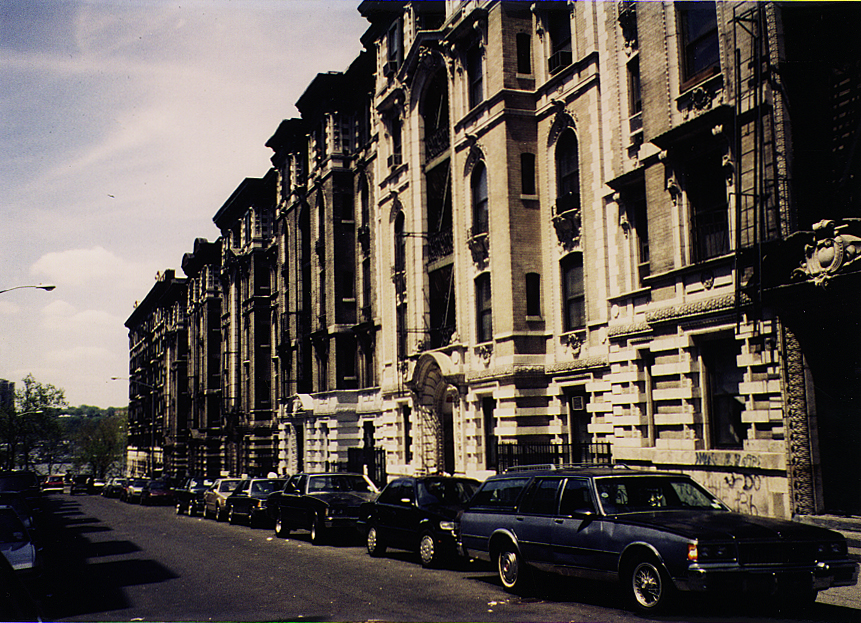 Tenant Interim Lease Program
Tenant Interim Lease Program 1989 Rudy Bruner Award for Urban Excellence - Gold Medal
New York City’s Tenant Interim Lease Program was created as a way for renters to become cooperative owners of their apartments in abandoned low-income buildings. Initiated in 1978, the program was a response to the housing crisis that resulted from landlords abandoning low-income housing units that became too expensive to repair and maintain. Renters in city-owned buildings can form a tenant association and receive training and technical assistance from the Urban Homesteading Assistance Board (UHAB), which oversees the program under the city’s Department of Housing Preservation and Development. Together tenants manage the building and eventually transition to cooperative ownership.
Unlike other city housing programs, the Tenant Interim Lease Program depends upon tenant initiative and persistence, making it a truly empowering experience for those who participate. Self-help is a cornerstone of the program, and participants develop valuable work and leadership skills through the process. Over 240 buildings participated in the first year, with 500 in process at the time of application, making it the city’s largest grassroots low-income housing program.
-
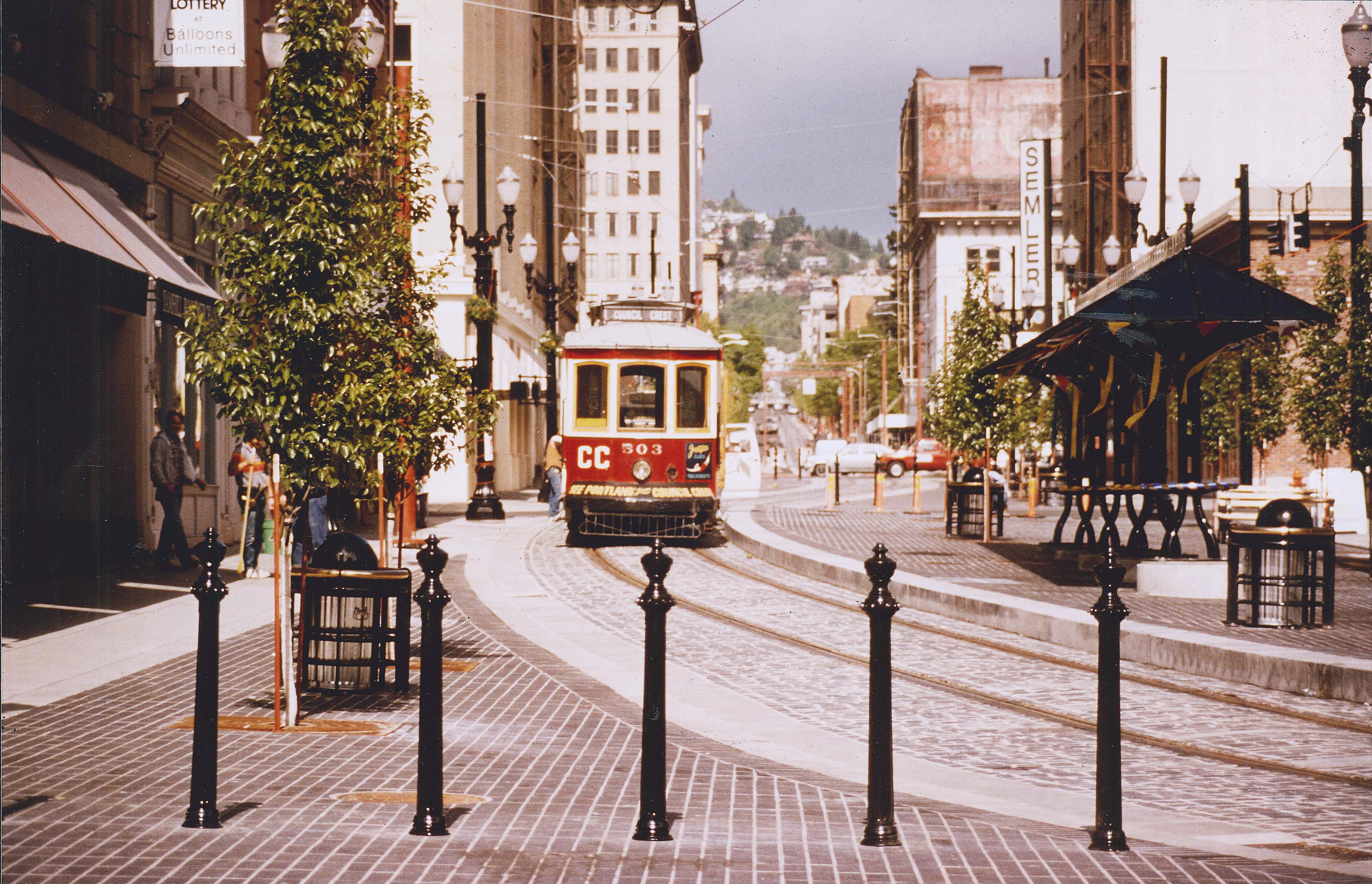 Portland Downtown Plan
Portland Downtown Plan 1989 Rudy Bruner Award for Urban Excellence - Gold Medal
The Portland Downtown Plan in Oregon combined public and private investment and citizen participation to revitalize downtown and reconnect it to the waterfront. Completed in 1972, it established a collective vision and planning process to redevelop downtown over two decades and involved businesses, residents, transit organizations, and multiple levels of government in a joint effort to create an urban community in the heart of the city. The plan leveraged public and private investment to expand local transit, preserve historic buildings, create public spaces including a new riverfront park, foster new housing and retail development, and encourage public art and better streetscape and building design.
The large-scale plan kept a focus on the human scale, allowing the development to have a wider and deeper impact on the community. It has been celebrated for its grassroots participation and its potential to serve as a model for other American cities.
-
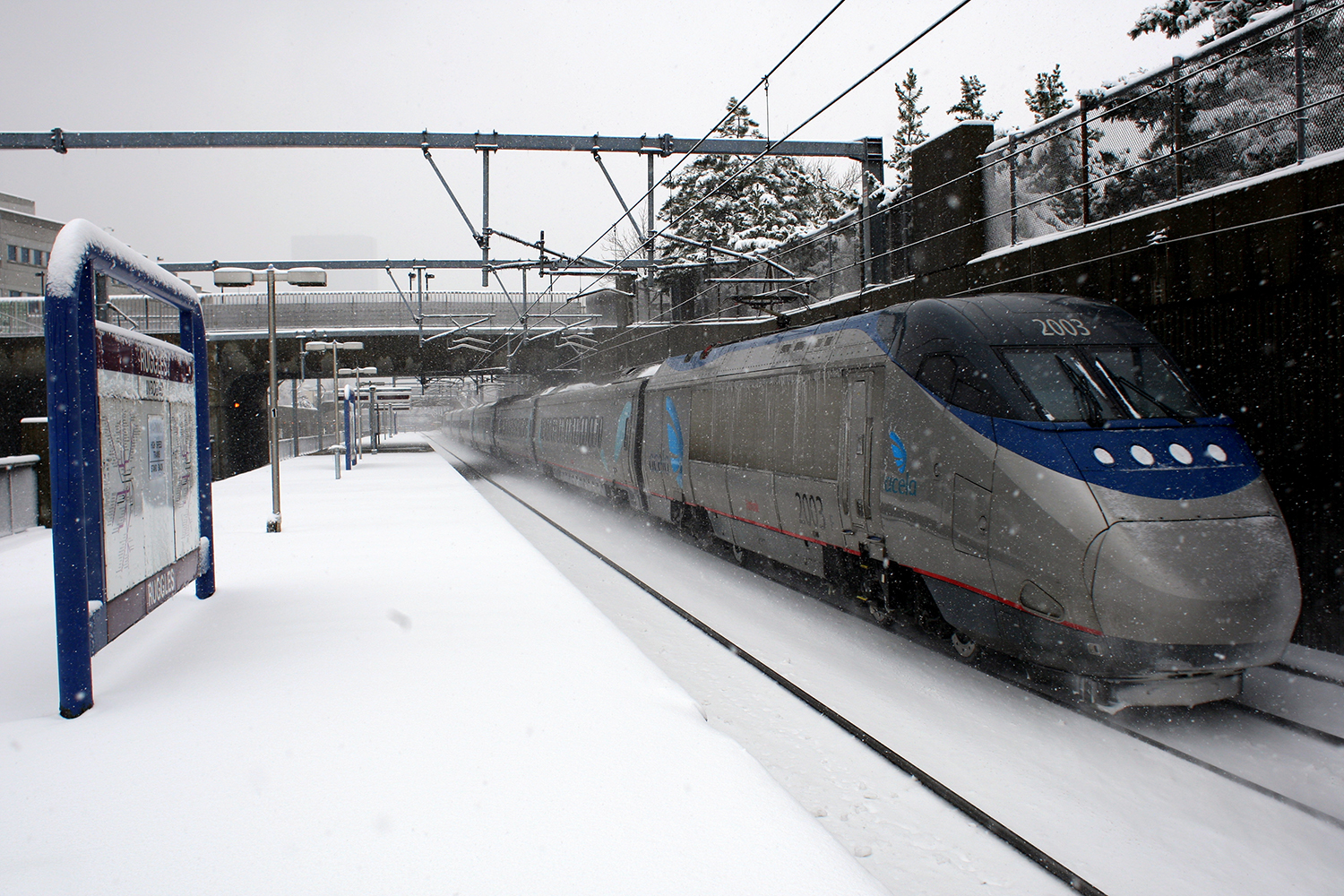 Southwest Corridor Project
Southwest Corridor Project 1989 Rudy Bruner Award for Urban Excellence - Silver Medal
The Southwest Corridor Project in Boston addressed inequitable access to public transit by expanding mass transit and repurposing abandoned land into a park. One of the largest public works projects in Massachusetts’ history, the project connects several outer neighborhoods to each other and downtown with new rail lines, transit stations, and a 52-acre landscaped greenway with trails, community gardens, and recreational facilities.
The project addresses the need for efficient, inclusive transit; the development of jobs; green space and recreation; and safe public spaces. Four lines of commuter rail, Amtrak service, and eight transit stations now connect older and lower-income neighborhoods with downtown and the greater Boston area. Land that had been abandoned when an interstate belt plan was voted down by the community after demolition had already destroyed parts of several neighborhoods was transformed into the Corridor Park, and the $750 million of federal money that had been earmarked for the highway was reallocated for the Southwest Corridor Project. Community participation and leadership and the cooperation of public agencies were vital to the overturning of the highway proposal and the successful development of the corridor.
-
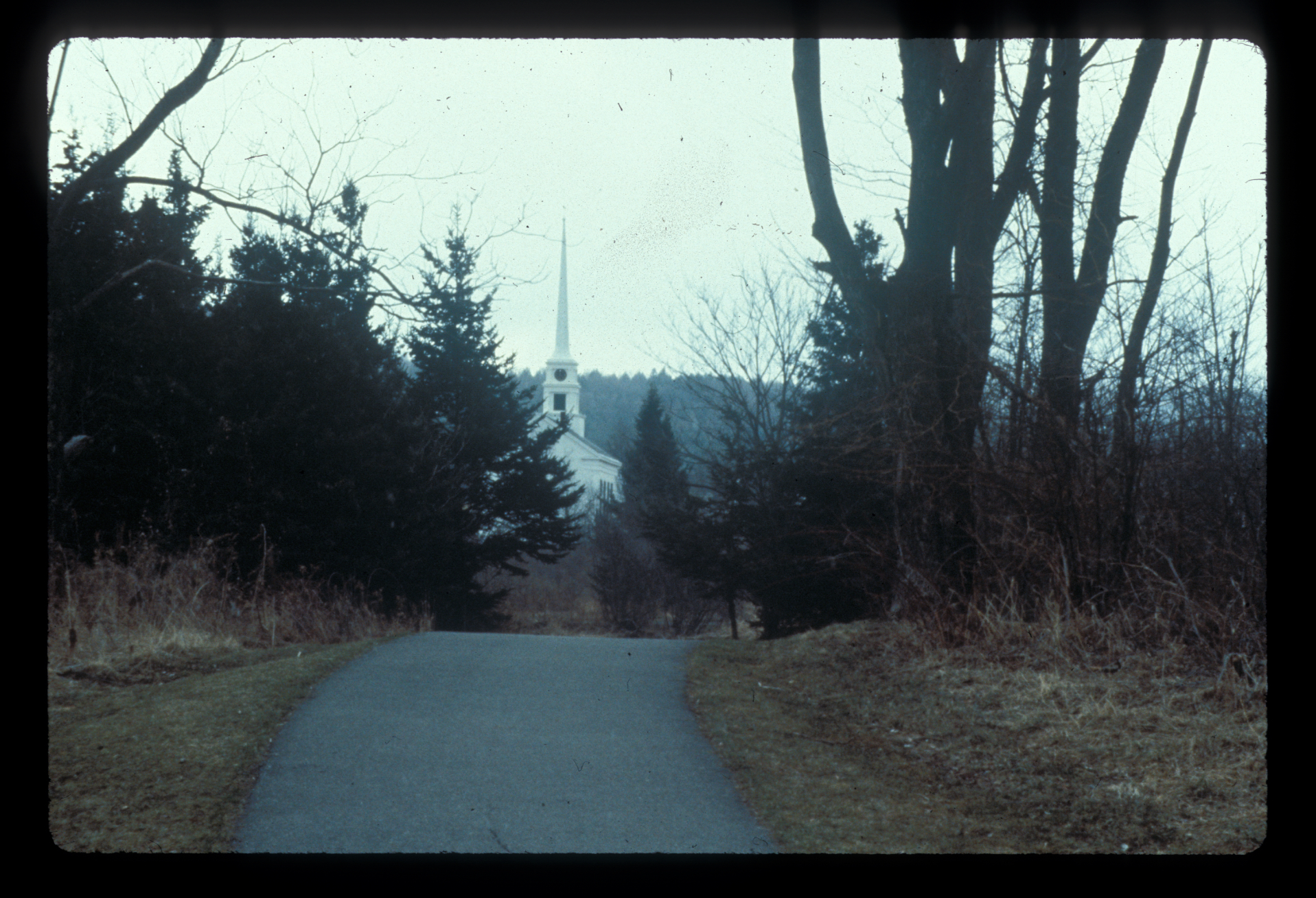 Stowe Recreation Path
Stowe Recreation Path 1989 Rudy Bruner Award for Urban Excellence - Silver Medal
The Stowe Recreation Path in Vermont is a five-mile multi-purpose riverfront greenway used year-round for a variety of outdoor activities and events. Completed in 1989, the paved trail criss-crosses the West Branch River and preserves open space for everyone to enjoy. With stunning mountain views and access to local restaurants, lodges, and businesses, the public parkway has become the social center of the town. Residents and tourists alike use the popular recreational route for biking, walking, and cross-country skiing as well as organized events and informal social gatherings throughout the year.
Local resident Anne Lusk planned, championed, and implemented the grassroots effort that mobilized community participation and collaboration and organized the donation of 32 parcels of riverfront land. Resident support was strong, and with little federal grant money available, their creative fundraising efforts helped make the path possible. What started out as an answer to the need for a safe route for cyclists and walkers became, according to many, “the best thing to happen to Stowe.”
-
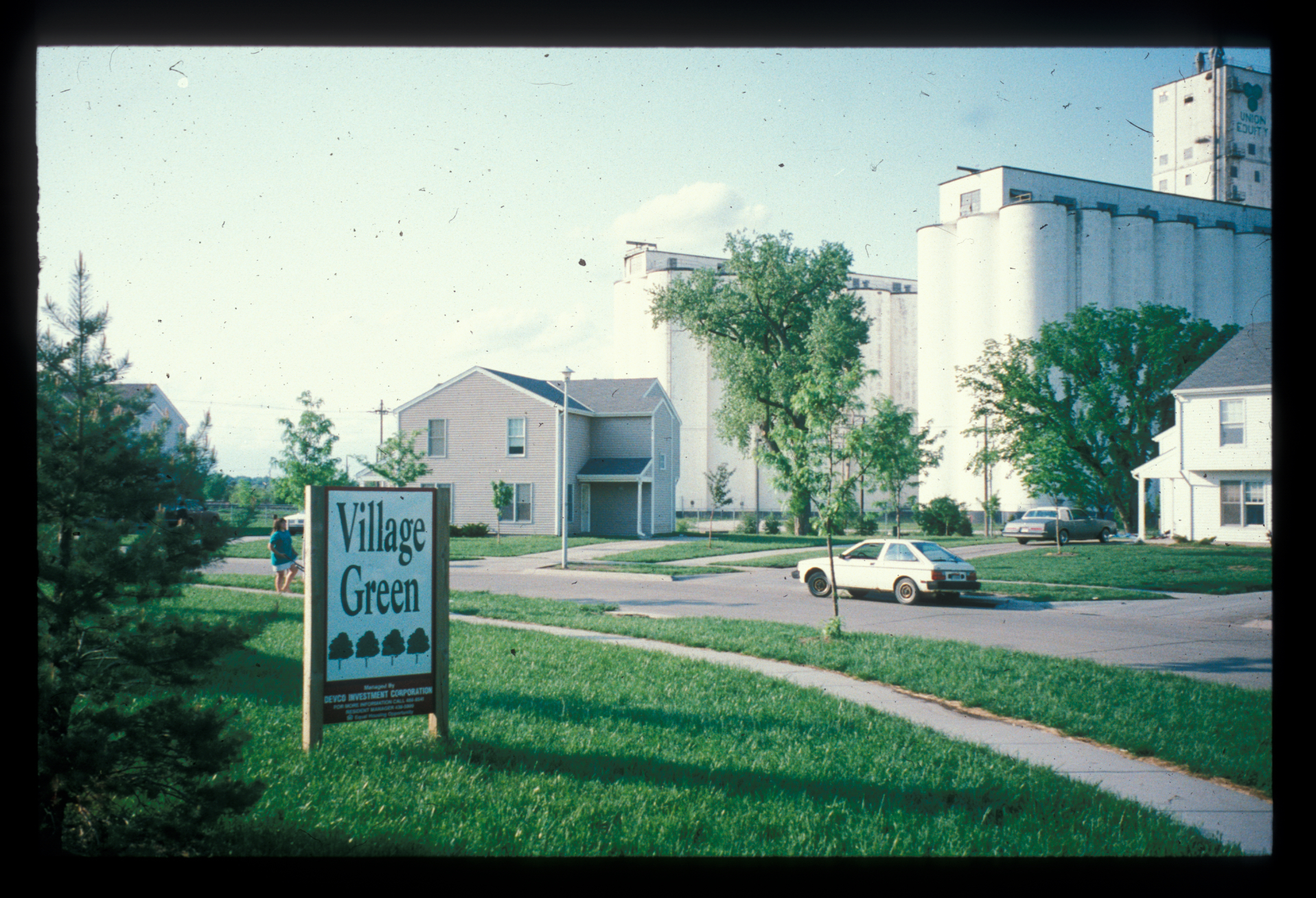 Radial Reuse Project
Radial Reuse Project 1989 Rudy Bruner Award for Urban Excellence - Silver Medal
Created on abandoned land once intended for a highway, the Radial Reuse Project is a four-mile linear park that revitalized neighborhoods in Lincoln, Nebraska. Completed in 1992, the project includes 75 acres assembled by the city over three decades for a proposed highway that was never built. The parkway provides needed recreation and open space and has sparked residential and business reinvestment in three of Lincoln’s older inner city neighborhoods.
After the highway was voted down in 1981, a citizen advisory board known as the Radial Reuse Task Force was formed to develop a plan to repurpose the vacant land. They proposed a new linear park with a bike and walking path that would revitalize adjacent neighborhoods and improve public infrastructure, stimulate private investment, and increase home ownership opportunities for low- and moderate-income families. The project attracted more than $6.4 million in public funding and $17 million in private investment for the park and adjoining neighborhoods as well as programs to foster home ownership and improvement in low- and moderate-income communities.
-
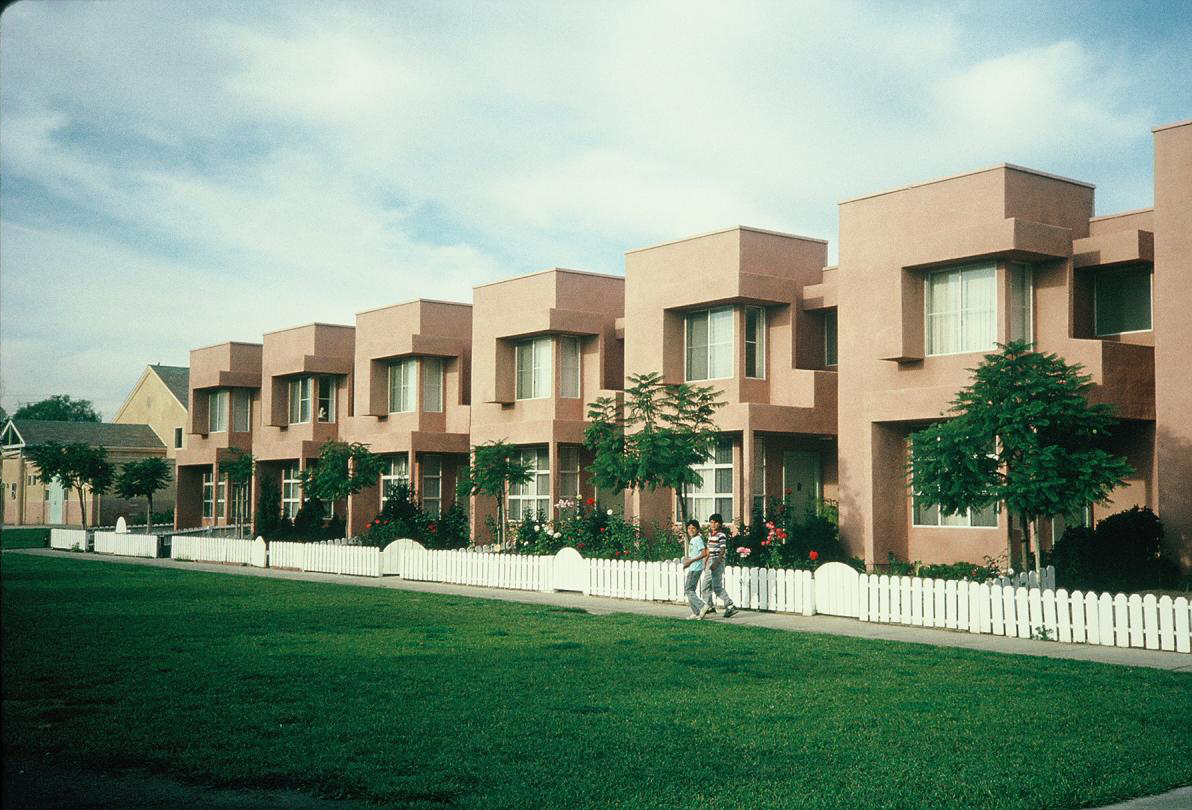 Cabrillo Village
Cabrillo Village 1989 Rudy Bruner Award for Urban Excellence - Silver Medal
Cabrillo Village, a former labor camp in Saticoy, California, is an affordable housing community created and cooperatively owned and managed by farm workers. In 1975 the workers, striking against cheap labor and oppression, faced eviction from the village. Rather than lose their homes, residents joined together to fight the eviction and in 1976 were able to purchase Cabrillo Village. They rebuilt the 1936 labor camp to create an affordable housing cooperative with resident ownership and control.
Over the next three years, the new owners renovated and expanded the existing, dilapidated cabins and built new, energy efficient single-family homes and community facilities. The 25-acre village now includes 160 new and renovated homes and a community center. Cultural, environmental, and family values were top priorities in the resident-driven design and construction of the new housing units and rehabilitation of the older cabins. The new structures incorporate passive and active solar heating systems with contemporary adobe styling.
-
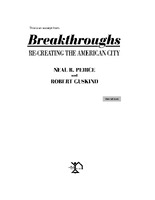 Portland Downtown Plan case study
Portland Downtown Plan case study
-
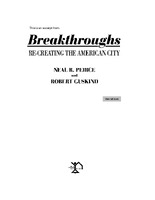 Tenant Interim Lease Program case study
Tenant Interim Lease Program case study
-
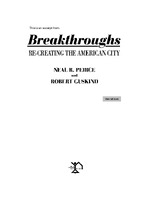 Cabrillo Village case study
Cabrillo Village case study
-
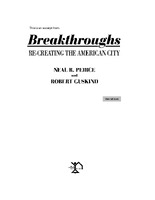 Radial Reuse Project case study
Radial Reuse Project case study
-
 Southwest Corridor Project case study
Southwest Corridor Project case study
-
 Stowe Recreation Path case study
Stowe Recreation Path case study
-
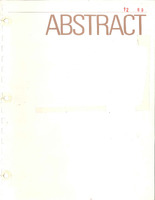 Tenant Interim Lease Program application
Tenant Interim Lease Program application
-
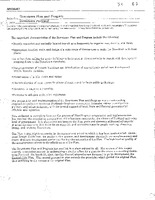 Portland Downtown Plan application
Portland Downtown Plan application
-
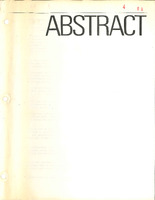 Southwest Corridor Project application
Southwest Corridor Project application
-
 Stowe Recreation Path application
Stowe Recreation Path application
-
 Radial Reuse Project application
Radial Reuse Project application
-
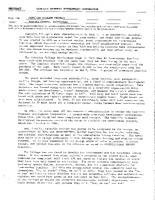 Cabrillo Village application
Cabrillo Village application
-
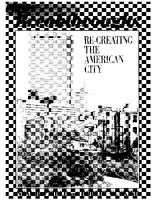 Breakthroughs: Re-creating the American City
Breakthroughs: Re-creating the American City 1989 Rudy Bruner Award for Urban Excellence
-
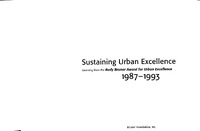 Sustaining Urban Excellence: Learning from the Rudy Bruner Award for Urban Excellence 1987-1993
Sustaining Urban Excellence: Learning from the Rudy Bruner Award for Urban Excellence 1987-1993 The Rudy Bruner Award seeks to discover and celebrate outstanding urban places, while serving as a forum for debating urban issues and the nature of urban excellence. The projects presented in this book include the winners from he first award cycle in 1987 through 1993. While each of the winners represented innovation and success when they were recognized by the Rudy Bruner Award, time is the ultimate test of viability. As the Award proceeded it therefore became important to ask:
-How have these urban places withstood the test of time?
-How have they evolved in the face of changing circumstances?
-What do these places have to teach us when viewed as a whole?
In order to answer these questions, the Bruner Foundation, with assistance from the United States Department of Housing and Urban Development, undertook to revisit these finalists. This book documents the findings of those visits, and offers important observations about the challenge of sustaining urban excellence.
 Tenant Interim Lease Program 1989 Rudy Bruner Award for Urban Excellence - Gold Medal New York City’s Tenant Interim Lease Program was created as a way for renters to become cooperative owners of their apartments in abandoned low-income buildings. Initiated in 1978, the program was a response to the housing crisis that resulted from landlords abandoning low-income housing units that became too expensive to repair and maintain. Renters in city-owned buildings can form a tenant association and receive training and technical assistance from the Urban Homesteading Assistance Board (UHAB), which oversees the program under the city’s Department of Housing Preservation and Development. Together tenants manage the building and eventually transition to cooperative ownership. Unlike other city housing programs, the Tenant Interim Lease Program depends upon tenant initiative and persistence, making it a truly empowering experience for those who participate. Self-help is a cornerstone of the program, and participants develop valuable work and leadership skills through the process. Over 240 buildings participated in the first year, with 500 in process at the time of application, making it the city’s largest grassroots low-income housing program.
Tenant Interim Lease Program 1989 Rudy Bruner Award for Urban Excellence - Gold Medal New York City’s Tenant Interim Lease Program was created as a way for renters to become cooperative owners of their apartments in abandoned low-income buildings. Initiated in 1978, the program was a response to the housing crisis that resulted from landlords abandoning low-income housing units that became too expensive to repair and maintain. Renters in city-owned buildings can form a tenant association and receive training and technical assistance from the Urban Homesteading Assistance Board (UHAB), which oversees the program under the city’s Department of Housing Preservation and Development. Together tenants manage the building and eventually transition to cooperative ownership. Unlike other city housing programs, the Tenant Interim Lease Program depends upon tenant initiative and persistence, making it a truly empowering experience for those who participate. Self-help is a cornerstone of the program, and participants develop valuable work and leadership skills through the process. Over 240 buildings participated in the first year, with 500 in process at the time of application, making it the city’s largest grassroots low-income housing program. Portland Downtown Plan 1989 Rudy Bruner Award for Urban Excellence - Gold Medal The Portland Downtown Plan in Oregon combined public and private investment and citizen participation to revitalize downtown and reconnect it to the waterfront. Completed in 1972, it established a collective vision and planning process to redevelop downtown over two decades and involved businesses, residents, transit organizations, and multiple levels of government in a joint effort to create an urban community in the heart of the city. The plan leveraged public and private investment to expand local transit, preserve historic buildings, create public spaces including a new riverfront park, foster new housing and retail development, and encourage public art and better streetscape and building design. The large-scale plan kept a focus on the human scale, allowing the development to have a wider and deeper impact on the community. It has been celebrated for its grassroots participation and its potential to serve as a model for other American cities.
Portland Downtown Plan 1989 Rudy Bruner Award for Urban Excellence - Gold Medal The Portland Downtown Plan in Oregon combined public and private investment and citizen participation to revitalize downtown and reconnect it to the waterfront. Completed in 1972, it established a collective vision and planning process to redevelop downtown over two decades and involved businesses, residents, transit organizations, and multiple levels of government in a joint effort to create an urban community in the heart of the city. The plan leveraged public and private investment to expand local transit, preserve historic buildings, create public spaces including a new riverfront park, foster new housing and retail development, and encourage public art and better streetscape and building design. The large-scale plan kept a focus on the human scale, allowing the development to have a wider and deeper impact on the community. It has been celebrated for its grassroots participation and its potential to serve as a model for other American cities. Southwest Corridor Project 1989 Rudy Bruner Award for Urban Excellence - Silver Medal The Southwest Corridor Project in Boston addressed inequitable access to public transit by expanding mass transit and repurposing abandoned land into a park. One of the largest public works projects in Massachusetts’ history, the project connects several outer neighborhoods to each other and downtown with new rail lines, transit stations, and a 52-acre landscaped greenway with trails, community gardens, and recreational facilities. The project addresses the need for efficient, inclusive transit; the development of jobs; green space and recreation; and safe public spaces. Four lines of commuter rail, Amtrak service, and eight transit stations now connect older and lower-income neighborhoods with downtown and the greater Boston area. Land that had been abandoned when an interstate belt plan was voted down by the community after demolition had already destroyed parts of several neighborhoods was transformed into the Corridor Park, and the $750 million of federal money that had been earmarked for the highway was reallocated for the Southwest Corridor Project. Community participation and leadership and the cooperation of public agencies were vital to the overturning of the highway proposal and the successful development of the corridor.
Southwest Corridor Project 1989 Rudy Bruner Award for Urban Excellence - Silver Medal The Southwest Corridor Project in Boston addressed inequitable access to public transit by expanding mass transit and repurposing abandoned land into a park. One of the largest public works projects in Massachusetts’ history, the project connects several outer neighborhoods to each other and downtown with new rail lines, transit stations, and a 52-acre landscaped greenway with trails, community gardens, and recreational facilities. The project addresses the need for efficient, inclusive transit; the development of jobs; green space and recreation; and safe public spaces. Four lines of commuter rail, Amtrak service, and eight transit stations now connect older and lower-income neighborhoods with downtown and the greater Boston area. Land that had been abandoned when an interstate belt plan was voted down by the community after demolition had already destroyed parts of several neighborhoods was transformed into the Corridor Park, and the $750 million of federal money that had been earmarked for the highway was reallocated for the Southwest Corridor Project. Community participation and leadership and the cooperation of public agencies were vital to the overturning of the highway proposal and the successful development of the corridor. Stowe Recreation Path 1989 Rudy Bruner Award for Urban Excellence - Silver Medal The Stowe Recreation Path in Vermont is a five-mile multi-purpose riverfront greenway used year-round for a variety of outdoor activities and events. Completed in 1989, the paved trail criss-crosses the West Branch River and preserves open space for everyone to enjoy. With stunning mountain views and access to local restaurants, lodges, and businesses, the public parkway has become the social center of the town. Residents and tourists alike use the popular recreational route for biking, walking, and cross-country skiing as well as organized events and informal social gatherings throughout the year. Local resident Anne Lusk planned, championed, and implemented the grassroots effort that mobilized community participation and collaboration and organized the donation of 32 parcels of riverfront land. Resident support was strong, and with little federal grant money available, their creative fundraising efforts helped make the path possible. What started out as an answer to the need for a safe route for cyclists and walkers became, according to many, “the best thing to happen to Stowe.”
Stowe Recreation Path 1989 Rudy Bruner Award for Urban Excellence - Silver Medal The Stowe Recreation Path in Vermont is a five-mile multi-purpose riverfront greenway used year-round for a variety of outdoor activities and events. Completed in 1989, the paved trail criss-crosses the West Branch River and preserves open space for everyone to enjoy. With stunning mountain views and access to local restaurants, lodges, and businesses, the public parkway has become the social center of the town. Residents and tourists alike use the popular recreational route for biking, walking, and cross-country skiing as well as organized events and informal social gatherings throughout the year. Local resident Anne Lusk planned, championed, and implemented the grassroots effort that mobilized community participation and collaboration and organized the donation of 32 parcels of riverfront land. Resident support was strong, and with little federal grant money available, their creative fundraising efforts helped make the path possible. What started out as an answer to the need for a safe route for cyclists and walkers became, according to many, “the best thing to happen to Stowe.” Radial Reuse Project 1989 Rudy Bruner Award for Urban Excellence - Silver Medal Created on abandoned land once intended for a highway, the Radial Reuse Project is a four-mile linear park that revitalized neighborhoods in Lincoln, Nebraska. Completed in 1992, the project includes 75 acres assembled by the city over three decades for a proposed highway that was never built. The parkway provides needed recreation and open space and has sparked residential and business reinvestment in three of Lincoln’s older inner city neighborhoods. After the highway was voted down in 1981, a citizen advisory board known as the Radial Reuse Task Force was formed to develop a plan to repurpose the vacant land. They proposed a new linear park with a bike and walking path that would revitalize adjacent neighborhoods and improve public infrastructure, stimulate private investment, and increase home ownership opportunities for low- and moderate-income families. The project attracted more than $6.4 million in public funding and $17 million in private investment for the park and adjoining neighborhoods as well as programs to foster home ownership and improvement in low- and moderate-income communities.
Radial Reuse Project 1989 Rudy Bruner Award for Urban Excellence - Silver Medal Created on abandoned land once intended for a highway, the Radial Reuse Project is a four-mile linear park that revitalized neighborhoods in Lincoln, Nebraska. Completed in 1992, the project includes 75 acres assembled by the city over three decades for a proposed highway that was never built. The parkway provides needed recreation and open space and has sparked residential and business reinvestment in three of Lincoln’s older inner city neighborhoods. After the highway was voted down in 1981, a citizen advisory board known as the Radial Reuse Task Force was formed to develop a plan to repurpose the vacant land. They proposed a new linear park with a bike and walking path that would revitalize adjacent neighborhoods and improve public infrastructure, stimulate private investment, and increase home ownership opportunities for low- and moderate-income families. The project attracted more than $6.4 million in public funding and $17 million in private investment for the park and adjoining neighborhoods as well as programs to foster home ownership and improvement in low- and moderate-income communities. Cabrillo Village 1989 Rudy Bruner Award for Urban Excellence - Silver Medal Cabrillo Village, a former labor camp in Saticoy, California, is an affordable housing community created and cooperatively owned and managed by farm workers. In 1975 the workers, striking against cheap labor and oppression, faced eviction from the village. Rather than lose their homes, residents joined together to fight the eviction and in 1976 were able to purchase Cabrillo Village. They rebuilt the 1936 labor camp to create an affordable housing cooperative with resident ownership and control. Over the next three years, the new owners renovated and expanded the existing, dilapidated cabins and built new, energy efficient single-family homes and community facilities. The 25-acre village now includes 160 new and renovated homes and a community center. Cultural, environmental, and family values were top priorities in the resident-driven design and construction of the new housing units and rehabilitation of the older cabins. The new structures incorporate passive and active solar heating systems with contemporary adobe styling.
Cabrillo Village 1989 Rudy Bruner Award for Urban Excellence - Silver Medal Cabrillo Village, a former labor camp in Saticoy, California, is an affordable housing community created and cooperatively owned and managed by farm workers. In 1975 the workers, striking against cheap labor and oppression, faced eviction from the village. Rather than lose their homes, residents joined together to fight the eviction and in 1976 were able to purchase Cabrillo Village. They rebuilt the 1936 labor camp to create an affordable housing cooperative with resident ownership and control. Over the next three years, the new owners renovated and expanded the existing, dilapidated cabins and built new, energy efficient single-family homes and community facilities. The 25-acre village now includes 160 new and renovated homes and a community center. Cultural, environmental, and family values were top priorities in the resident-driven design and construction of the new housing units and rehabilitation of the older cabins. The new structures incorporate passive and active solar heating systems with contemporary adobe styling. Portland Downtown Plan case study
Portland Downtown Plan case study  Tenant Interim Lease Program case study
Tenant Interim Lease Program case study  Cabrillo Village case study
Cabrillo Village case study  Radial Reuse Project case study
Radial Reuse Project case study  Southwest Corridor Project case study
Southwest Corridor Project case study  Stowe Recreation Path case study
Stowe Recreation Path case study  Tenant Interim Lease Program application
Tenant Interim Lease Program application  Portland Downtown Plan application
Portland Downtown Plan application  Southwest Corridor Project application
Southwest Corridor Project application  Stowe Recreation Path application
Stowe Recreation Path application  Radial Reuse Project application
Radial Reuse Project application  Cabrillo Village application
Cabrillo Village application  Breakthroughs: Re-creating the American City 1989 Rudy Bruner Award for Urban Excellence
Breakthroughs: Re-creating the American City 1989 Rudy Bruner Award for Urban Excellence Sustaining Urban Excellence: Learning from the Rudy Bruner Award for Urban Excellence 1987-1993 The Rudy Bruner Award seeks to discover and celebrate outstanding urban places, while serving as a forum for debating urban issues and the nature of urban excellence. The projects presented in this book include the winners from he first award cycle in 1987 through 1993. While each of the winners represented innovation and success when they were recognized by the Rudy Bruner Award, time is the ultimate test of viability. As the Award proceeded it therefore became important to ask: -How have these urban places withstood the test of time? -How have they evolved in the face of changing circumstances? -What do these places have to teach us when viewed as a whole? In order to answer these questions, the Bruner Foundation, with assistance from the United States Department of Housing and Urban Development, undertook to revisit these finalists. This book documents the findings of those visits, and offers important observations about the challenge of sustaining urban excellence.
Sustaining Urban Excellence: Learning from the Rudy Bruner Award for Urban Excellence 1987-1993 The Rudy Bruner Award seeks to discover and celebrate outstanding urban places, while serving as a forum for debating urban issues and the nature of urban excellence. The projects presented in this book include the winners from he first award cycle in 1987 through 1993. While each of the winners represented innovation and success when they were recognized by the Rudy Bruner Award, time is the ultimate test of viability. As the Award proceeded it therefore became important to ask: -How have these urban places withstood the test of time? -How have they evolved in the face of changing circumstances? -What do these places have to teach us when viewed as a whole? In order to answer these questions, the Bruner Foundation, with assistance from the United States Department of Housing and Urban Development, undertook to revisit these finalists. This book documents the findings of those visits, and offers important observations about the challenge of sustaining urban excellence.